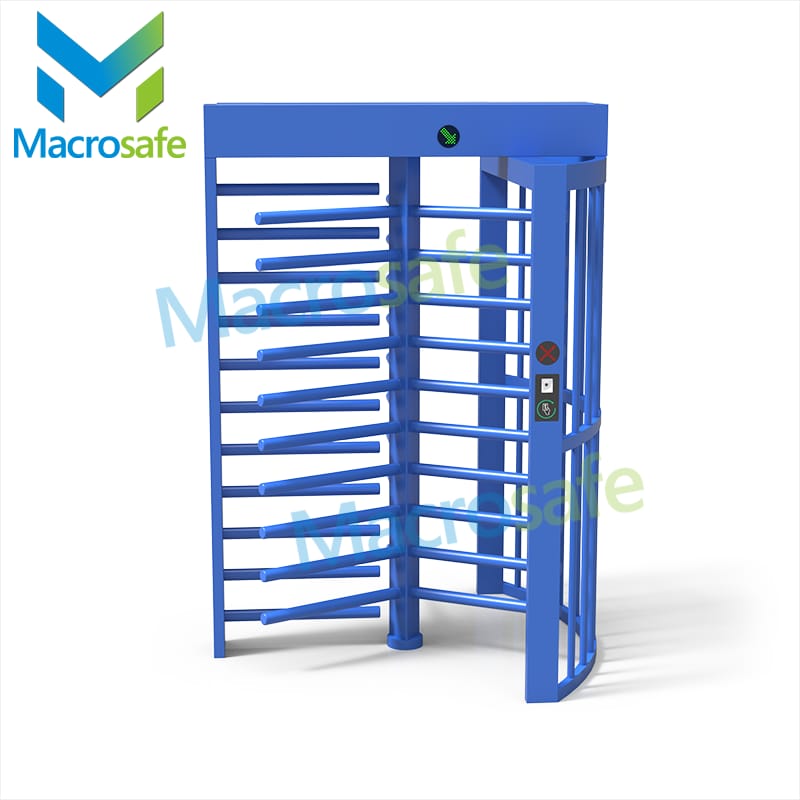It is an unfortunate fact that mass shootings and active shooter situations have become all too common in recent years. As such, it is essential that we are aware of how to respond in such an event. One of the most critical factors in avoiding an active shooter is to ensure the building you are entering has a secured entrance. A secured entrance serves as the first line of defense and can prevent or delay an active shooter from gaining entry into your building.
What is a secured entrance, and how can it help in an active shooter situation?
A secured entrance is a controlled access point that requires authorization or identification to enter a building. It typically involves physical barriers such as turnstile gates, card readers, or biometric scanners. The purpose of a secured entrance is to prevent unauthorized individuals from entering the building and to monitor who enters and exits. In an active shooter situation, a secured entrance can play a crucial role in delaying or preventing the attacker’s entry into the building.
Here are a few ways a secured entrance can help during an active shooter situation:
1. Slowing down the attacker: A secured entrance can slow down an active shooter by providing an additional obstacle for them to overcome. A locked door, for example, can provide valuable time for those inside the building to prepare and react appropriately.
2. Alerting authorities: A secured entrance can also be used to monitor who enters and exits a building. In the event of an active shooter, this can be invaluable in identifying the attacker, alerting authorities, and tracking their movements.
3. Limiting the attacker’s access: Depending on the type of secured entrance, it can be used to limit the attacker’s access to certain areas of the building. In a multi-story building, for example, the elevator may require identification to select a floor, preventing an attacker from accessing floors that are occupied.
4. Protecting occupants: Finally, a secured entrance can provide a safe space for occupants in the event of an active shooter. If a building has a secured entrance, occupants can use it as a secure area to shelter in place, away from the attacker.
What are some different types of secured entrances?
There are several different types of secured entrances, each with their benefits and drawbacks. Here are a few common types of secured entrances that you may encounter:
1. Card readers: Card readers are one of the most common types of secured entrances. These readers require a key card or fob to gain entry to a building, and the card or fob can be programmed to restrict access to certain areas of the building.
2. Biometric scanners: Biometric scanners use unique physical characteristics to grant access to a building. These scanners can use fingerprints, retinal scans, or facial recognition technology to identify individuals and grant them access.
3. Man traps: Man traps are small rooms or vestibules that require individuals to enter one at a time. Once inside, the individual must wait for a door to lock before the other door opens, allowing them access to the building. Man traps are often used in buildings where security is a top priority, such as government buildings or financial institutions.
4. Video intercoms: Video intercoms allow occupants to see and communicate with individuals outside the building before granting them access.
5. Turnstile gate: Turnstile gates can be used as secured entrances by requiring occupants to wait for the gate to cycle fully before entering. This provides time for security personnel to monitor who is entering the building and deny access to unauthorized individuals.
Conclusion
A secured entrance plays an essential role in an active shooter situation, making it the first line of defense. It can help slow down attackers, alert authorities, limit access, and provide a safe shelter for occupants. There are several different types of secured entrances to choose from, depending on the type of building and level of security required. Ultimately, it’s essential to ensure that your building has a secured entrance to minimize the risk of an active shooter situation.
